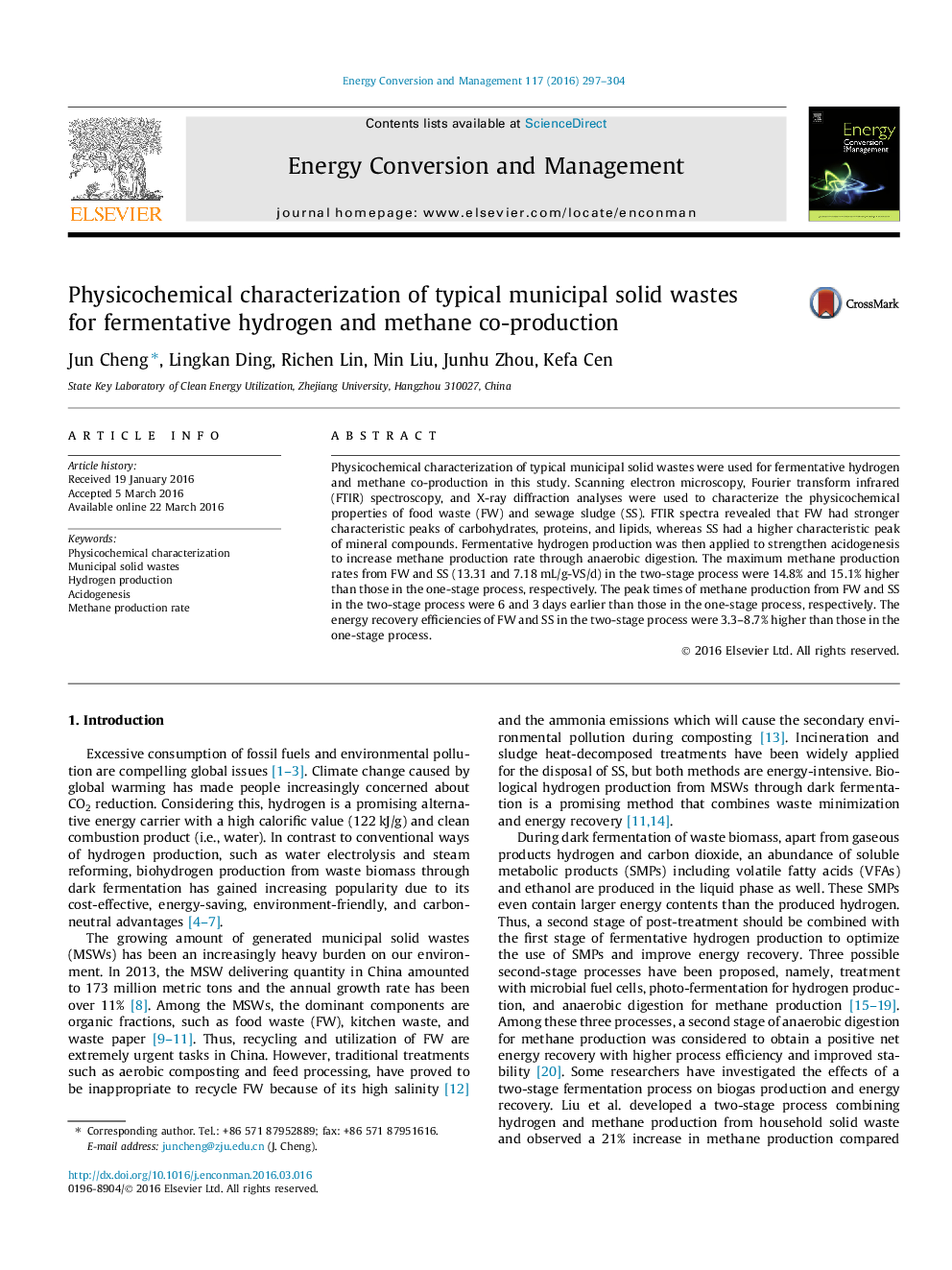| Article ID | Journal | Published Year | Pages | File Type |
|---|---|---|---|---|
| 7160805 | Energy Conversion and Management | 2016 | 8 Pages |
Abstract
Physicochemical characterization of typical municipal solid wastes were used for fermentative hydrogen and methane co-production in this study. Scanning electron microscopy, Fourier transform infrared (FTIR) spectroscopy, and X-ray diffraction analyses were used to characterize the physicochemical properties of food waste (FW) and sewage sludge (SS). FTIR spectra revealed that FW had stronger characteristic peaks of carbohydrates, proteins, and lipids, whereas SS had a higher characteristic peak of mineral compounds. Fermentative hydrogen production was then applied to strengthen acidogenesis to increase methane production rate through anaerobic digestion. The maximum methane production rates from FW and SS (13.31 and 7.18Â mL/g-VS/d) in the two-stage process were 14.8% and 15.1% higher than those in the one-stage process, respectively. The peak times of methane production from FW and SS in the two-stage process were 6 and 3Â days earlier than those in the one-stage process, respectively. The energy recovery efficiencies of FW and SS in the two-stage process were 3.3-8.7% higher than those in the one-stage process.
Keywords
Related Topics
Physical Sciences and Engineering
Energy
Energy (General)
Authors
Jun Cheng, Lingkan Ding, Richen Lin, Min Liu, Junhu Zhou, Kefa Cen,
